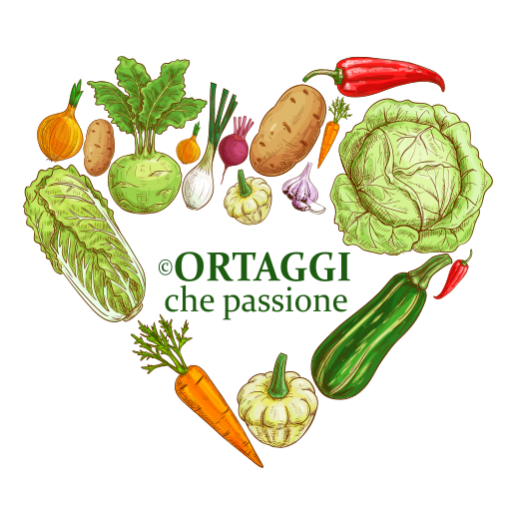The Bruscandoli, in English wild hops (Humulus lupulus L. – family Cannabaceae), are also known as “wild asparagus” due to their resemblance to asparagus (Asparagus officinalis L. – family Asparagaceae), although they are a completely different species.
To use them in the kitchen, the tender tips (the spring shoots) are collected, avoiding the lower woody parts. They are similar to thin, slightly curved asparagus. Bruscandoli emit a faint herbal scent. Their flavor is distinctive, delicate, and slightly bitter (due to the bitter compounds they contain, the same ones that give beer its typical taste) but very pleasant, which is why they are more appreciated compared to other wild herbs. The flavor of wild hop shoots is more satisfying when they are larger.
SEASON – the harvesting period of #bruscandoli is from March to May, when the shoots are still tender and have not developed leaves. Only the first 6-8 inches are used.
RECIPES with other wild herbs
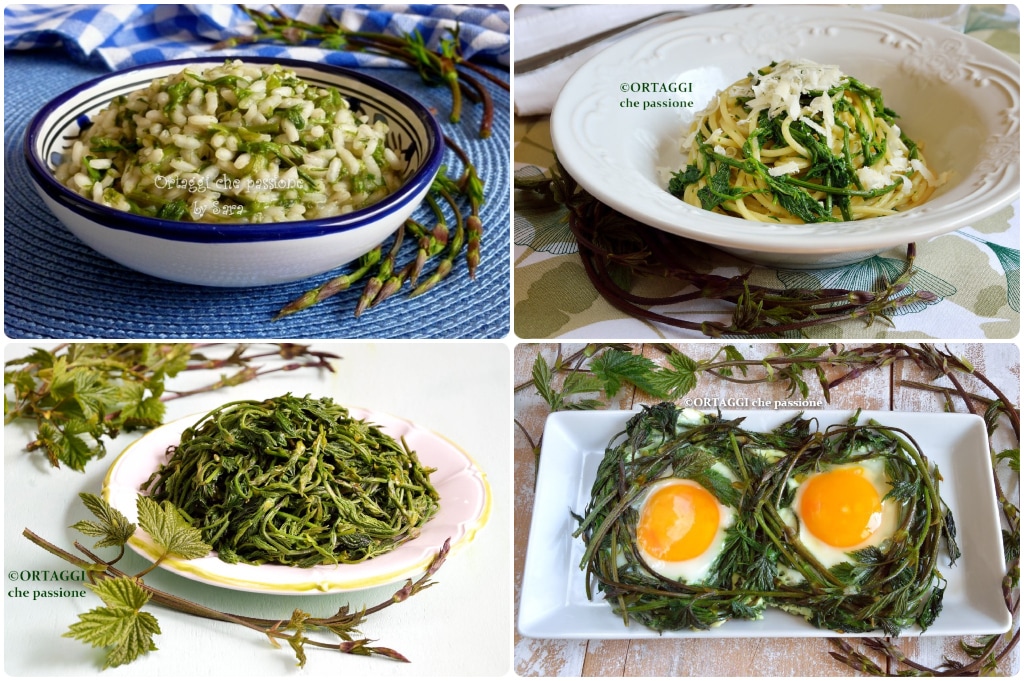
- Difficulty: Easy
- Cost: Medium
- Preparation time: 10 Minutes
- Portions: 2
- Cooking methods: Stovetop, Pressure Cooker, Steaming
- Cuisine: Wellness
- Seasonality: Spring
- Energy 8.50 (Kcal)
- Carbohydrates 1.00 (g) of which sugars 0.00 (g)
- Proteins 0.50 (g)
- Fat 0.00 (g) of which saturated 0.00 (g)of which unsaturated 0.00 (g)
- Fibers 0.00 (g)
- Sodium 2.00 (mg)
Indicative values for a portion of 83 g processed in an automated way starting from the nutritional information available on the CREA* and FoodData Central** databases. It is not food and / or nutritional advice.
* CREATES Food and Nutrition Research Center: https://www.crea.gov.it/alimenti-e-nutrizione https://www.alimentinutrizione.it ** U.S. Department of Agriculture, Agricultural Research Service. FoodData Central, 2019. https://fdc.nal.usda.gov
BOILED BRUSCANDOLI
- 3.5 oz bruscandoli
- to taste water
below are the calories for 100 grams of cooked bruscandoli
CARING for Bruscandoli
Cleaning them is quick, the important thing is to collect only the tender part of the stem (about 6 inches), leaving the lower woody part of the stem in nature. Wash before consumption.
COOKING easy and quick (boiling)
Cook in a pan with little water, or steam for about 5 minutes. In a pressure cooker, they cook in a few minutes.
🍀🍀🍀🍀
HOW TO RECOGNIZE BRUSCANDOLI?
They have leaves similar to those of the vine, bright green in color. Their stem is slightly stinging. Their thin stem can extend to over 16 feet in height. This climbing plant wraps itself agilely around brambles, delicate shrubs, and surrounding hedges.
WHERE TO FINDBRUSCANDOLI?
Their natural habitat includes the edges of woods, cultivated fields, country roads, river and ditch banks, found among brambles and hedges, growing on fences, near manure piles, and favoring sunny, fresh environments with fertile soils. They are found both in the plains and in hilly areas, up to elevations exceeding 3,280 feet above sea level.
Wild hops grow mainly in the northern regions of Italy (such as Veneto, Piedmont, Lombardy) and along the Apennines up to Abruzzo and Tuscany. Although less common in Mediterranean areas and on the islands, they can still be found in these areas.
To be sure of collecting Bruscandoli and in general the right wild herb, it is necessary to seek advice from experts in the area (herbalists or botanists) and consult information and images from Wikipedia. Additionally, when collecting any wild plant, it is important to do so responsibly, avoiding damaging the surrounding environment and respecting local regulations regarding collection.
They should not be confused with the flowering branches of other poisonous plants which at first glance are very similar; true bruscandoli have a hairy and slightly stinging stem.
Below is an image to distinguish them from similar plants.
Bruscandoli (Humulus) and Wild Asparagus (Asparagus) are edible wild plants.
Clematis (Clematis vitalba – Vitalba), Butcher’s Broom (Ruscus aculeatus L. – Pungitopo), and Black Bryony (Tamus communis L. – Tamaro) are known to be toxic. However, the shoots of these 3 plants (Clematis, Ruscus, and Tamus) are the least toxic part. Cooking, with subsequent removal of the cooking water, further helps reduce the presence of their harmful substances.
BRUSCANDOLI IN THE KITCHEN
After being boiled for about 5-10 minutes (with a reduced amount of water or better with steaming), they can be enjoyed simply seasoned. Alternatively, they can be sautéed in a pan.
HOW TO USE Bruscandoli
– BLANCH (for about 3 minutes) and sauté them in a pan with oil and garlic.
– ENRICH frittata, farifrittata, lasagna, savory pies, or use as a filling for fresh pasta
– CREPES, savory pancakes, or small crepes
– SAUCE for pasta
– PESTO (they can be used raw, or to soften their slightly bitter taste, blanch briefly)
– SOUFFLÉ
🍀🍀🍀🍀
🍀🍀🍀🍀
CLICK on the PHOTO to enter the RECIPE
🍀🍀🍀🍀
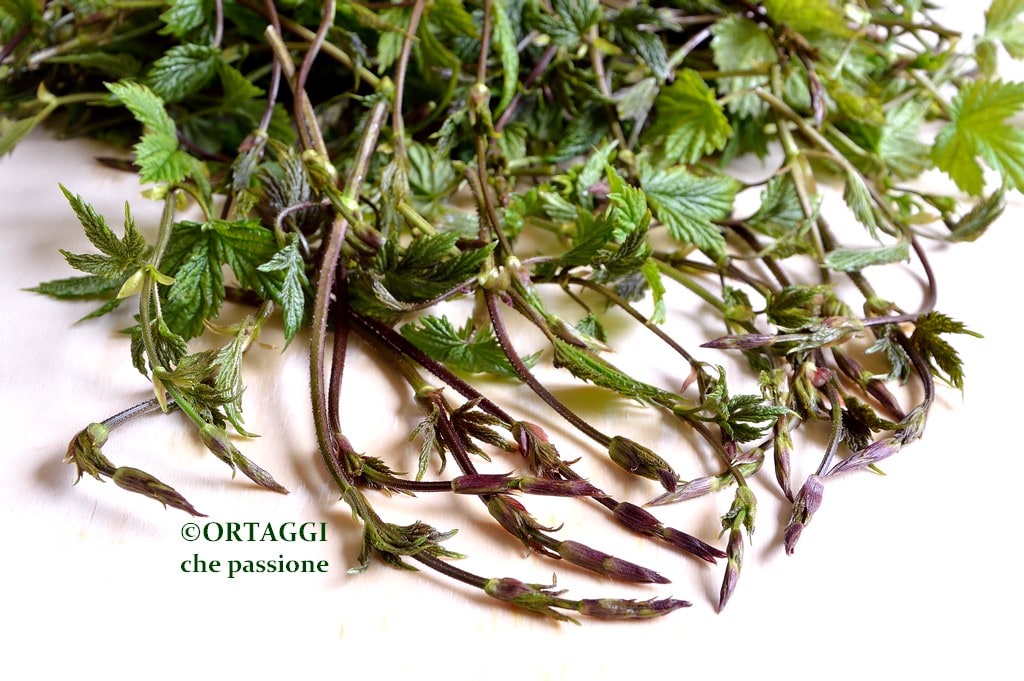
The Bruscandoli in a pan are an easy and quick spring side dish.
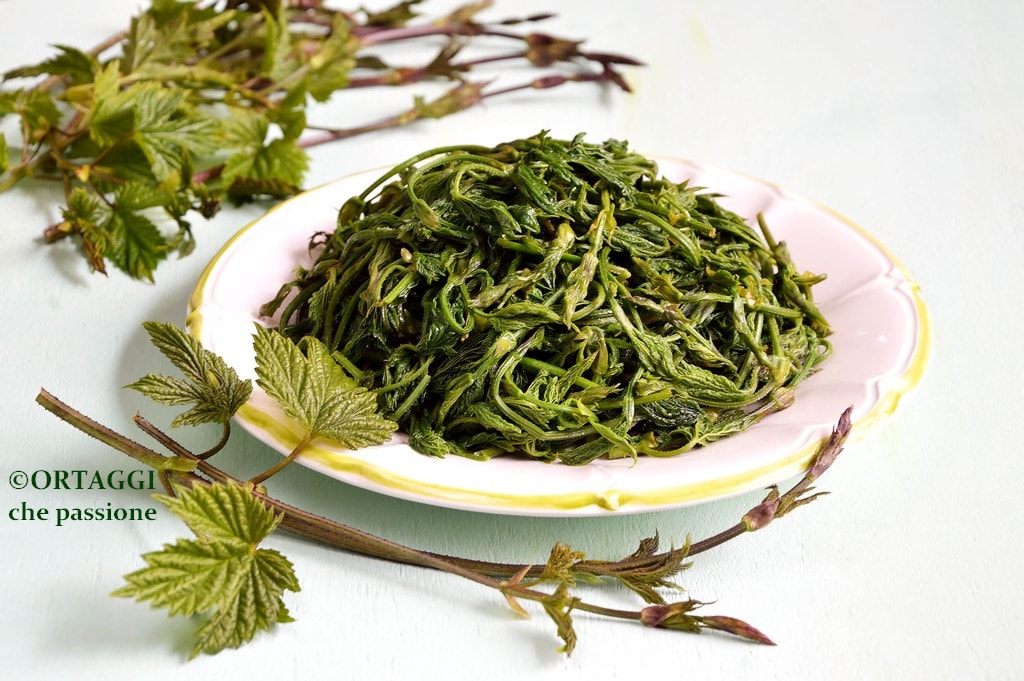
The pasta with bruscandoli is a first course to appreciate the unique flavor of this wild herb.
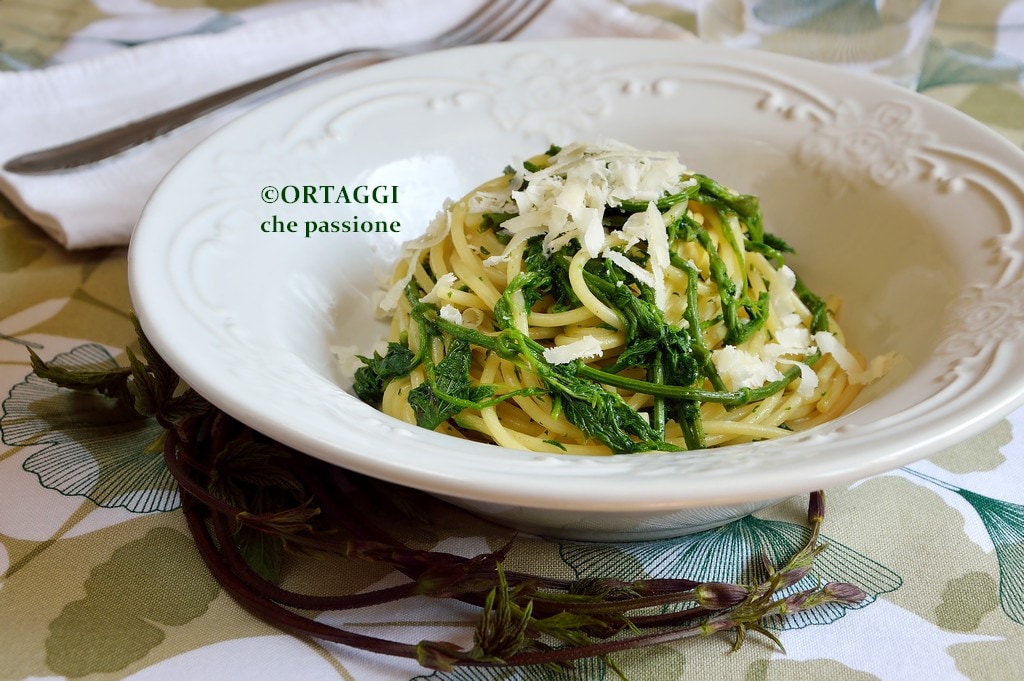
The risotto with bruscandoli is a tasty first course. Excellent with the addition of shrimp.
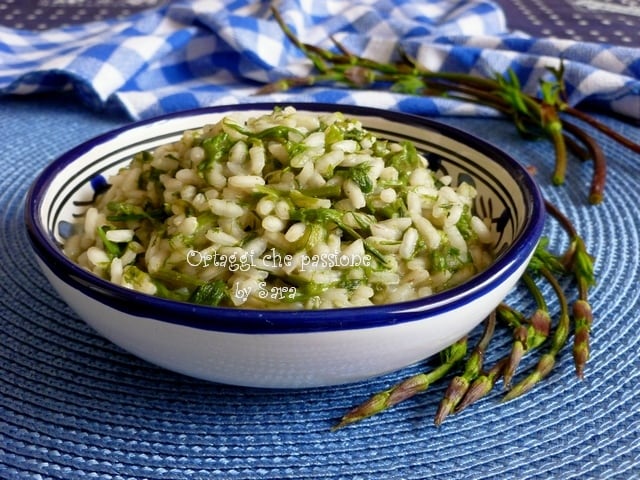
The nests of bruscandoli are a very quick and original spring recipe, to impress your guests or the younger members of the family.
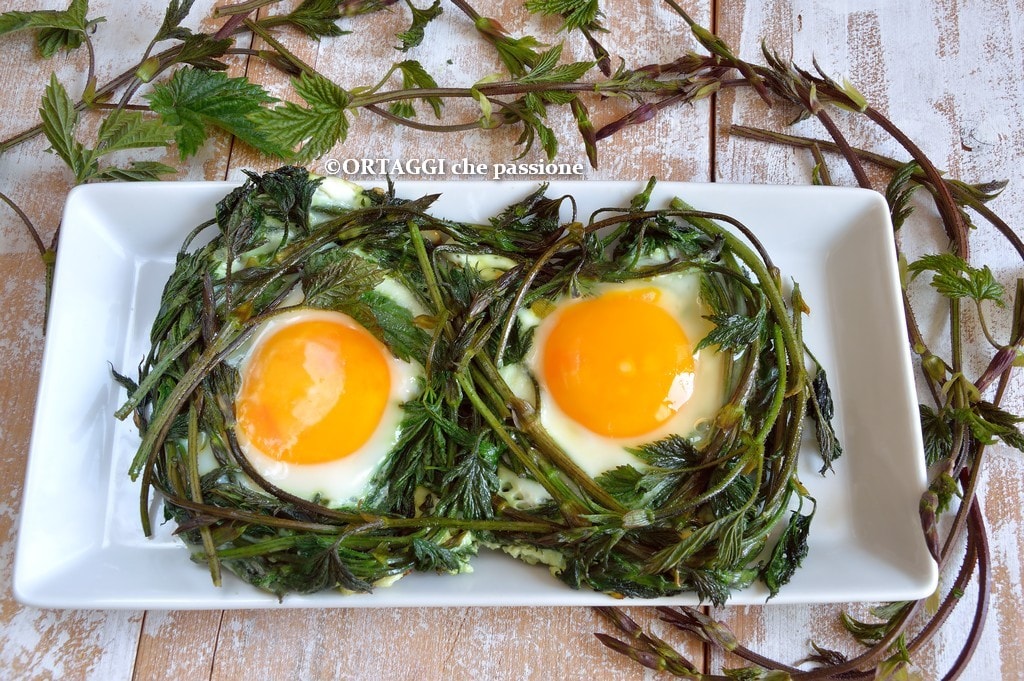
The sunflower savory puff pastry is a rustic flower-shaped dish, a beautiful centerpiece for parties.
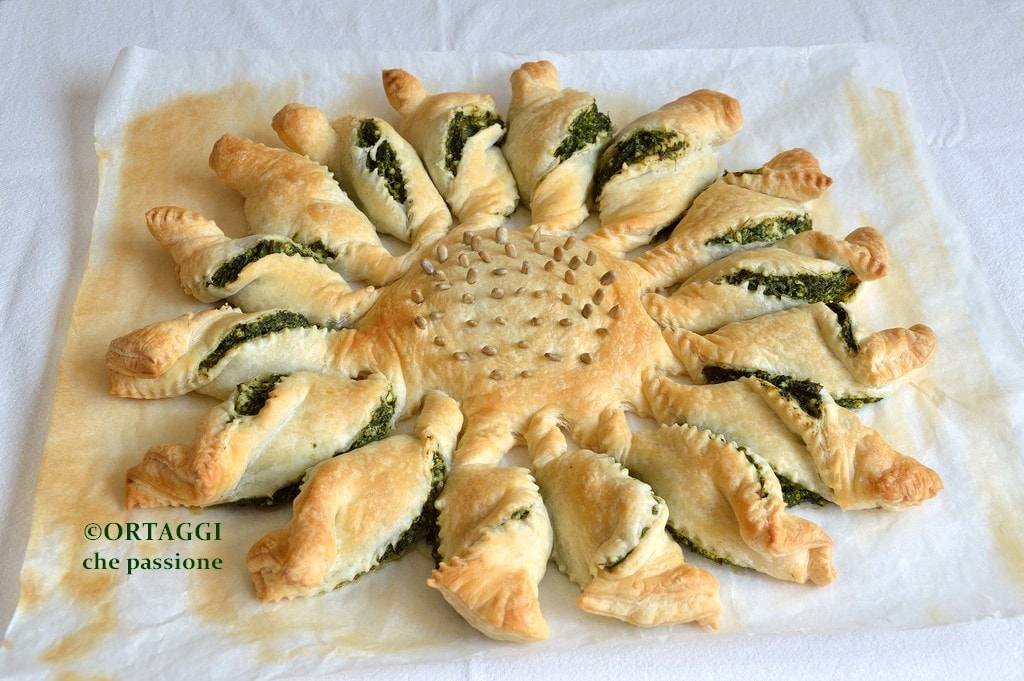
The square savory tart with wild herbs is a flavorful appetizer or main course with a very simple filling.

STORING
To store Bruscandoli, place them in a container with the stems immersed in water, as is done with cut flowers. It is best to consume them as soon as possible to maintain their freshness.
Other names for Bruscandoli
Wild asparagus, Asparagina, Bertüçi, Bruscandolo, Laurtiss, Lavertìn, Loertis, Luartis, Luertis, Luperi, Luvertìn, Noppolo, Ruertissi, Wild asparagus, Tavarini, Üertiss, Urticiòns, Urtizon, Vartìs, Vidalpe, Vidisone, Vitarbe, Viticedda.

